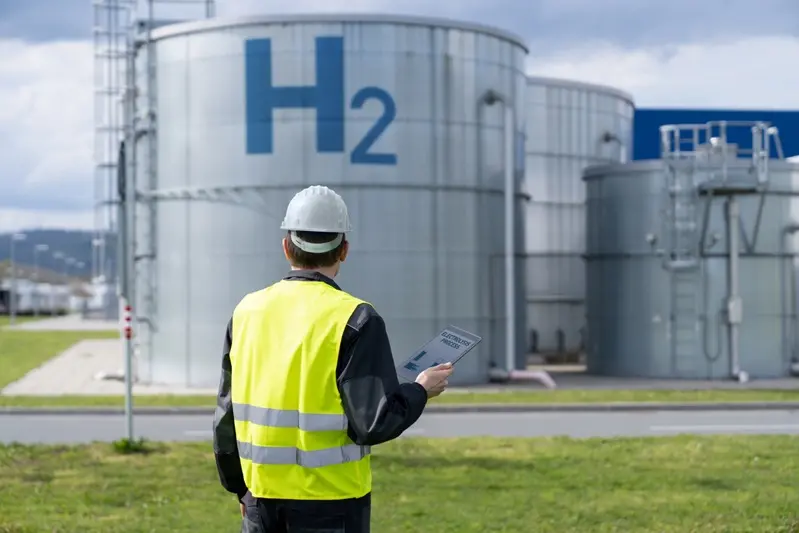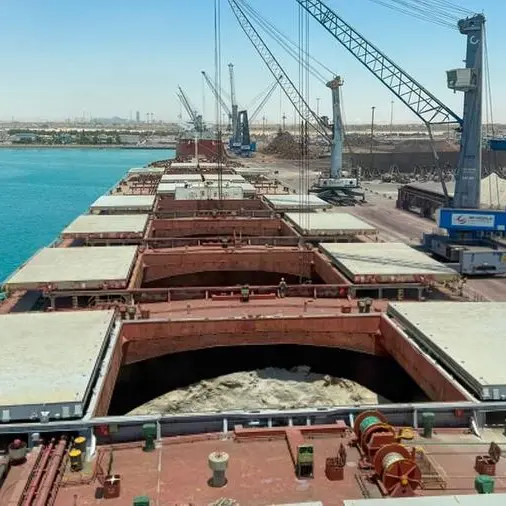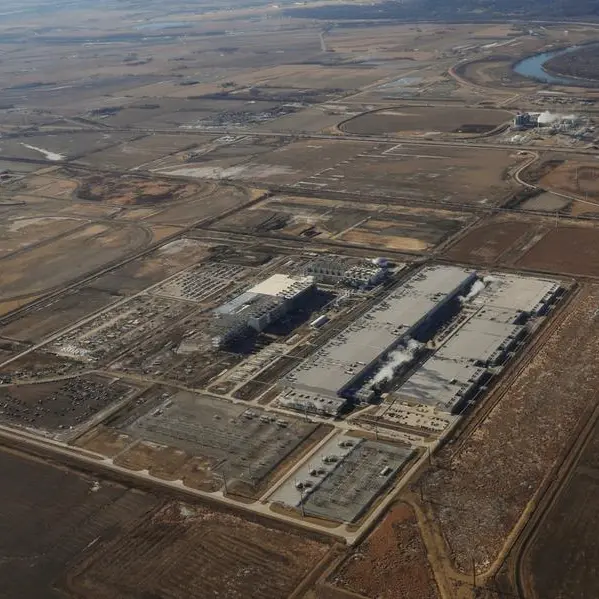PHOTO
Engineer on a background of Hydrogen factory
Climate technologies must undergo multiple early-stage deployments to achieve commercial adoption. These deployments are often complex due to the involvement of hardware, software, and infrastructure. Beyond capital, climate technologies also require project development expertise, community acceptance, and demonstrated commercial demand.
While climate technology projects are receiving some of these necessary inputs, it's not enough. This shortfall is known as the Scale Gap, the theme of a joint report by Boston Consulting Group (BCG), its technology and design unit BCG X and non-profit investor Elemental Excelerator.
Parham Peiroo, Partner at BCG and co-author of the report ‘Traversing the Climate Technology Scale Gap’ told Zawya Projects that the Scale Gap emerged as a critical concern due to the pressing need for advanced solutions to tackle climate change risks.


"The Scale Gap is primarily driven by the high capital intensity and risk profile of early-stage climate technology deployments, coupled with a lack of project development expertise and support for innovators," he explained.
He added that bridging this gap is crucial for significantly reducing global carbon emissions and accelerating the adoption of essential climate technologies.
Friction points for investors highlighted in the report include:
- Lack of resources (e.g., engineering, technical, policy knowledge) to evaluate and underwrite the technology and engineering merits of climate technology opportunities.
- A high green premium can increase feedstock and unit costs, making it difficult to align with customer willingness to pay and investors' risk-return thresholds.
- Investors and platforms are not incentivised to target early climate technology deployment, focusing instead on asset classes with predictable returns driven by factors like carried interests and individual promotions.
These constraints contribute to a global Scale Gap of over $150 billion, according to estimates by the report's authors.
Peiroo said traditional funding for climate technology projects has relied on various sources and structures.
"Venture capital has been instrumental in supporting early-stage projects, while private equity and institutional investors have typically engaged with more developed stages. Government grants and incentives have been crucial in catalysing innovation and deployment. Additionally, philanthropic funding has been a key driver for impact-driven projects, often providing critical support where commercial returns may be less certain."
Early-stage hurdles
Many innovative technologies struggle to progress beyond early deployment stages, failing to secure necessary funding and support, according to Faysal Taher, Partner and Associate Director, BCG.
He told Zawya Projects that a major constraint is the limited financing options for projects under $100 million, forcing developers to rely on costly venture funding for their initial deployments.


The report quoted a survey respondent as saying that investing in early-stage projects before they are de-risked is often too large for venture capital, not commercial enough for growth equity, and too risky for infrastructure investors. Moreover, most innovators aren't project developers, and many investors are still learning how to evaluate early-stage deals.
Taher underlined that recent economic uncertainties and fluctuating energy prices have exacerbated these challenges.
"Additionally, geopolitical tensions have affected investment flows and policy stability, creating a risk-averse investment climate and widening the gap between innovation and commercial adoption of climate technologies," he observed.
According to the report, climate investments fell by 40 per cent in 2023 compared to the previous year, driven by rising interest rates, inflation, recession concerns, and volatile capital markets. This decline affected all investment classes except governments and banks.
However, recent declines notwithstanding, the amount of money flowing into climate technology has been growing exponentially. While venture capital used to dominate climate technology and is still a significant pool of capital, banks, private equity, institutional investors, and infrastructure investors are now claiming an increasing share.
The report stated that bank investment increased by 3.5x between 2017 and 2023, making them the largest capital contributors to climate technology and marginally overtaking venture capital for the lead.
Taher elaborated: "Banks and private equity funds provide vital debt and equity financing, while institutional investors and infrastructure funds support larger-scale projects. Corporates play a dual role as off-takers and project investors, helping to de-risk investments. Insurers are creating innovative products to enable banks to issue debt."
Peiroo pointed out that new tax incentives and funding programmes are also emerging globally, with the U.S. Inflation Reduction Act (IRA) as a notable example. These government-led initiatives, tailored to specific national contexts, aim to catalyse climate technology investments.
Collaborative approach
In the place of the siloed approach that characterises traditional deployment of funds (for example, venture funds partnering only with other private or corporate venture funds), the report advocates a collaborative approach that blends traditional financing with new approaches to address the Scale Gap.
Peiroo highlighted examples of innovative deal structures, noting: "Pairing conventional debt financing with newly available tax incentives creates more attractive investment propositions. Another promising structure involves using philanthropic capital to de-risk early deployments, attracting additional funders who might otherwise perceive the risk as too high."
Taher added that collaboration within the climate finance ecosystem ensures that projects can access a wide range of expertise and capital sources to navigate the challenges of early deployment and increase their chances of achieving commercial scale.
"Key lessons from successful Scale Gap traversal projects include securing diverse funding sources early in the project lifecycle, effectively leveraging government incentives and public-private partnerships, and engaging proactively with community stakeholders to ensure project acceptance and support," he said.
Poised for leadership
Peiroo observed that in the Middle East, sovereign funds and state-owned companies are playing a crucial role in financing climate technology initiatives, both domestically and in overseas markets, thereby positioning the region for leadership in renewable energy and sustainable projects.
"There is substantial potential for increased collaboration between these entities, global investors, and technology partners, which could accelerate the scaling of innovations regionally and internationally," he said.
The BCG Partner stated that he expects the climate technology financing landscape to evolve significantly over the next 5-10 years, with increased public and private capital availability for climate projects driven by growing awareness of climate urgency and potential returns.
"Blended finance models, which combine various funding types to optimise risk-return profiles, will likely gain prominence. Government policies and incentives are expected to be increasingly pivotal in driving investments. Additionally, international cooperation and global climate finance initiatives will become increasingly important as addressing climate change requires coordinated global action," he concluded.
(Reporting by Anoop Menon; Editing by SA Kader)
Subscribe to our Projects' PULSE newsletter that brings you trustworthy news, updates and insights on project activities, developments, and partnerships across sectors in the Middle East and Africa





















